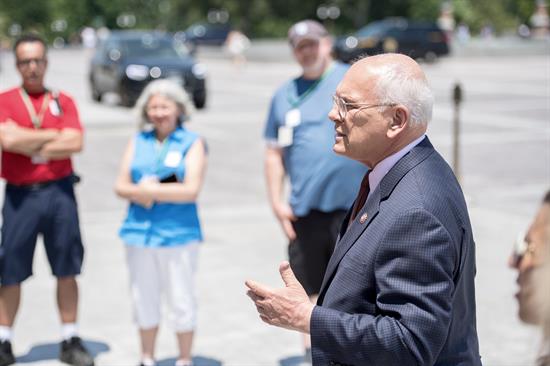- Home
- About
-
Constituent Services
- Academy Nominations
- Community Project Funding
- Congressional Art Competition
- Congressional App Challenge
- Congressional Commendation
- Event Invitation
- Grants
- Help with a Federal Agency
- Internships
- IRA Clean Energy Consumer Benefits
- Know Your Rights: Immigration
- Request a Meeting
- Request Surplus Books
- Presidential Greeting
- Visit Washington D.C.
- Issues & Legislation
- News
- 20th District
- Contact

Press Releases
Tonko Heritage Areas & Erie Canalway Bills Pass in Bipartisan House VoteLegislation strengthens support for locally run heritage sites, reauthorizes Erie Canalway Commission
Washington,
February 26, 2021
WASHINGTON—Representatives Paul D. Tonko (D-NY) and David McKinley (R-WV) cheered House passage of their National Heritage Areas Act, H.R. 1316, today as part of H.R. 803, the Protecting America’s Wilderness and Public Lands Act. This bipartisan legislation streamlines the existing patchwork system for U.S. Heritage Areas by providing formal guidance to the local partnerships that maintain them through the National Parks Service as well as clear, transparent standards that make them easier to develop and maintain. Rep. Tonko’s legislation extending authorization for the Erie Canalway National Heritage Corridor Commission was also included in the package. “Throughout this COVID challenge, our cherished Heritage Areas—including New York’s own Erie Canalway—have provided safe and often scenic places to exercise, get outside and connect with our past and the diverse history that has made our communities what they are today,” Congressman Tonko said. “In addition to their profound historical and cultural significance, these sites support a variety of economic opportunities and vitality for our region. Maintaining and preserving these precious historic and economic gems is more important than ever. I’m grateful to my colleagues for recognizing the importance of our heritage areas, and thank my friend Congressman McKinley, for his strong leadership working to ensure these treasured sites can be enjoyed for generations to come.” “National Heritage Areas play an essential role in preserving areas of historic and cultural value in communities across the country. Sites like the Appalachian Forrest and the Wheeling Heritage Areas in West Virginia represent cultural and historic milestones and also provide significant economic return for their area,” said Congressman McKinley. “Congress has shown there is bipartisan support in dedicating resources to streamlining an overly burdensome process to ensure heritage areas continue to inspire future generations.” There are currently 55 National Heritage Areas across the country, including the Erie Canalway and Hudson Valley Heritage Areas in the Capital Region. According to a U.S. Department of Commerce study, cultural heritage tourism contributes more than $192 billion annually to the U.S. economy. The National Heritage Area Act:
###
|
